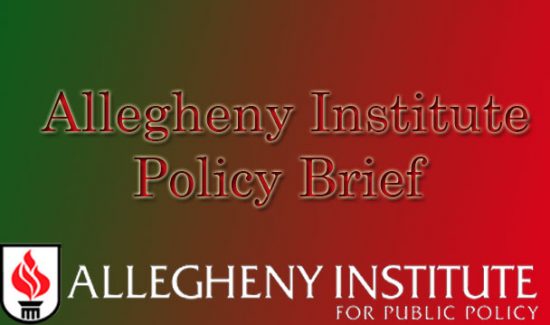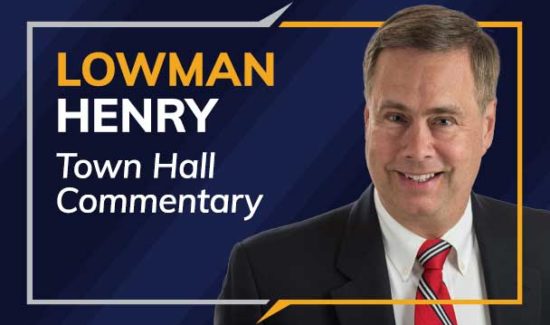Stimulus Was a Failure
A politician’s admonishment to "Look it up!" inspired some research and a postmortem on the American Recovery and Reinvestment Act of 2009, a/k/a, the stimulus.
A postmortem, Latin for "after death," is fitting. The bill is dead, the money spent – a failure. Coincidentally, in Latin, the English word "fail" is "deficere" – the Latin root of the English word "deficit."
Had the bill’s objectives been expressed as deficit-creation and debt-inflation, the stimulus would have been a huge success.
The $787 billion stimulus bill passed nine days after President Barack Obama’s inauguration, unread, never-debated and without a single Republican vote in favor. With accumulated interest, stimulus costs will exceed $1.2 trillion, all borrowed, and help raise the national debt to unimaginable levels.
Paraphrasing Mark Steyn, America must repay $15 trillion before it can declare itself broke.
Supporters promised that unemployment would peak below 8 percent as thousands of "shovel-ready" stimulus projects employed millions. Unemployment soared past 8 percent and remains at 9 percent. Including underemployed Americans and disheartened job-market dropouts, joblessness approaches Great Depression levels.
Most "shovel-ready" projects were not. Today, project design, planning, bidding and the bureaucratic processes of acquisition, easements and permits takes years, not weeks. States receiving stimulus funds for infrastructure used it for projects previously approved or under way while withholding already allocated state project funds.
Legislators who voted for it say that "three million people are working today who would not be working without the stimulus," and that one-third of the cost of the stimulus came from "tax cuts." Congressional Budget Office data are used to support both allegations.
There is some merit to the former claim, though few of the jobs preserved were private-sector or infrastructure-related. Much of the stimulus was spent on supplementing budgets in mostly Democratic states to protect public-service unions from losing dues-payers to lay-offs, and Democratic politicians from losing union campaign contributions. The stimulus temporarily papered over the failures of liberal governance in many jurisdictions, Pennsylvania included.
A political body (Congress) specifies CBO operating rules that politically constrain the agency. CBO bill "scoring" requires forecasting and, often, computer modeling. The CBO employed both to predict the stimulus’ impact.
Forecasts are guesses. The CBO is only permitted to do linear forecasts. They cannot estimate and factor into forecasts how legislation will change the behavior of those affected and skew the results from linear projections. So, unless the CBO is reporting measureable results (e.g., revenues), their figures are nearly always wrong.
Computer models use assumptions as bases for predicting results. Legislators overseeing the CBO may provide the assumptions.
Peter Suderman at Reason Magazine reported on stimulus jobs-modeling: "If you create a model that predicts the law will create jobs, and then you rerun a mild variation of that model a few years later using updated figures about what money was actually spent, it still reports that the stimulus created jobs. But there’s no counting here, no real-world attempt to assess the reality of the stimulus. … CBO director Douglas Elmendorf confirmed … last year …, ‘If the stimulus bill did not do what it was originally forecast to do, then that would not have been detected by the subsequent analysis.’"
In other words, if the CBO model assumed that the stimulus would create jobs, then the stimulus created jobs – even if it didn’t. That it’s not provable is an appealing feature of politicians’ claim that 3 million more would be unemployed without the stimulus. In fact, 2.9 million fewer Americans are working today than pre-stimulus.
The allegation that one-third of the stimulus went to tax "cuts" is also false. PolitiFact, a political fact-checker, reported that "the mix of tax cuts includes a refundable credit of up to $400 per individual … $800 for married couples; a temporary increase of the earned-income tax credit for disadvantaged families; and … extension of a program that allows businesses to recover the costs of capital expenditures faster than usual."
PolitiFact disallowed as a "cut" the annual inflation-indexing of the alternative minimum tax. On that basis alone, the one-third claim cannot be substantiated. Only in political Washington can continuing something that’s been done for years be considered a "cut."
Strictly speaking, there were no permanent "cuts" in the stimulus, mostly one-time refunds and temporary credits. Disadvantaged families already pay no taxes, so increasing taxpayer-subsidized IRS credits to them cannot fairly be considered tax cuts. Without counting one-time refunds and temporary credits as cuts, the accelerated depreciation of businesses’ capital investments remains the only tax cut in the stimulus – and that expires when an investment is fully amortized.
Will congressional politicians accept everything issued by the CBO? Before Thanksgiving, the CBO increased the cost of the stimulus to $825 billion from $787 billion – up 5 percent – and reported that the stimulus will hurt long-term economic growth due to "the resulting increase in government debt." Each dollar of additional debt, it reports, "crowds out about a third of a dollar’s worth of private domestic capital."
A third of $15 trillion? That’s $5 trillion – an amount the CBO thinks our debt will cost the private sector. That means $5 trillion less investment and fewer private-sector jobs for the living and unborn Americans committed by our political class to repaying the still-expanding debt.
http://www.ldnews.com/columns/ci_19436929




